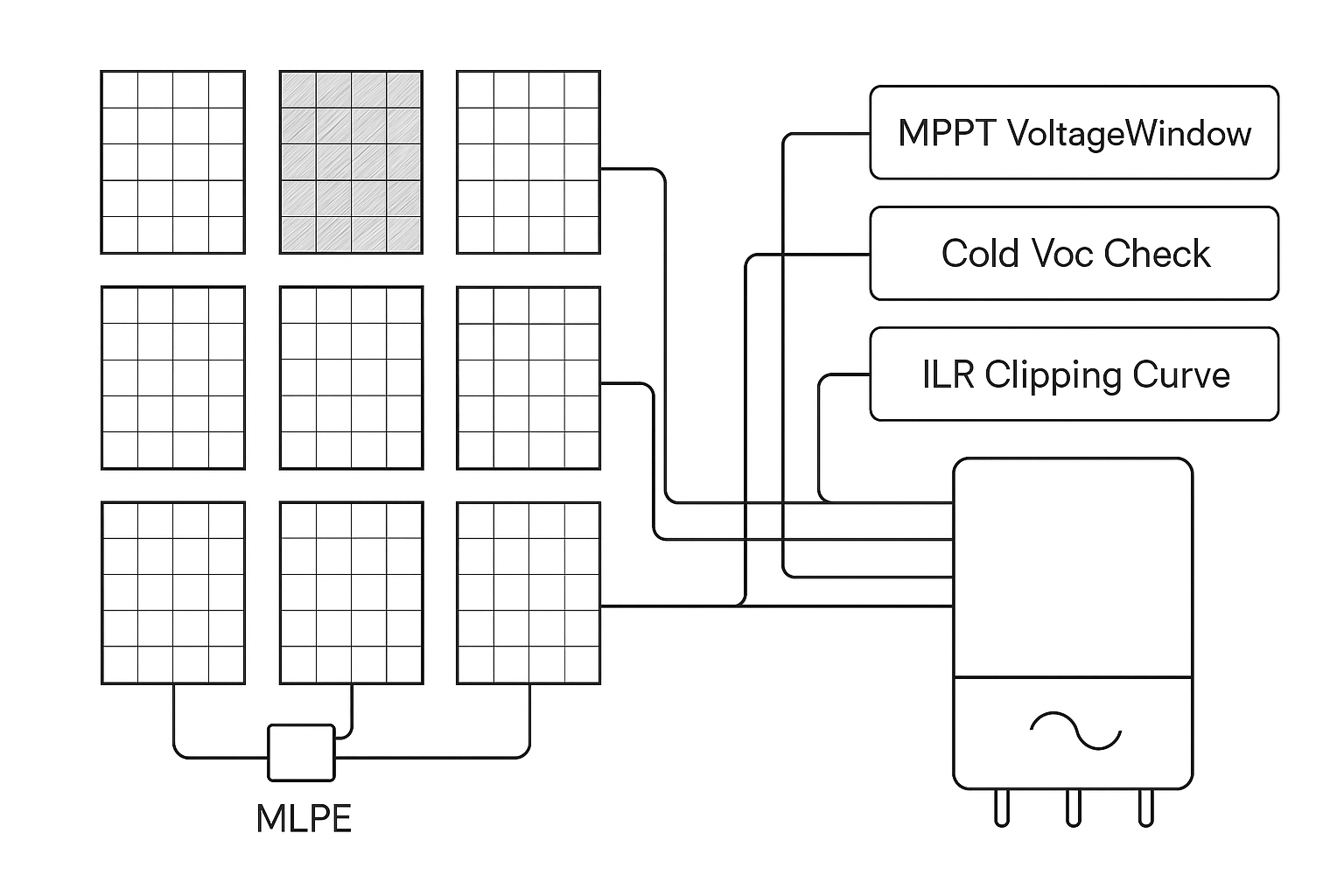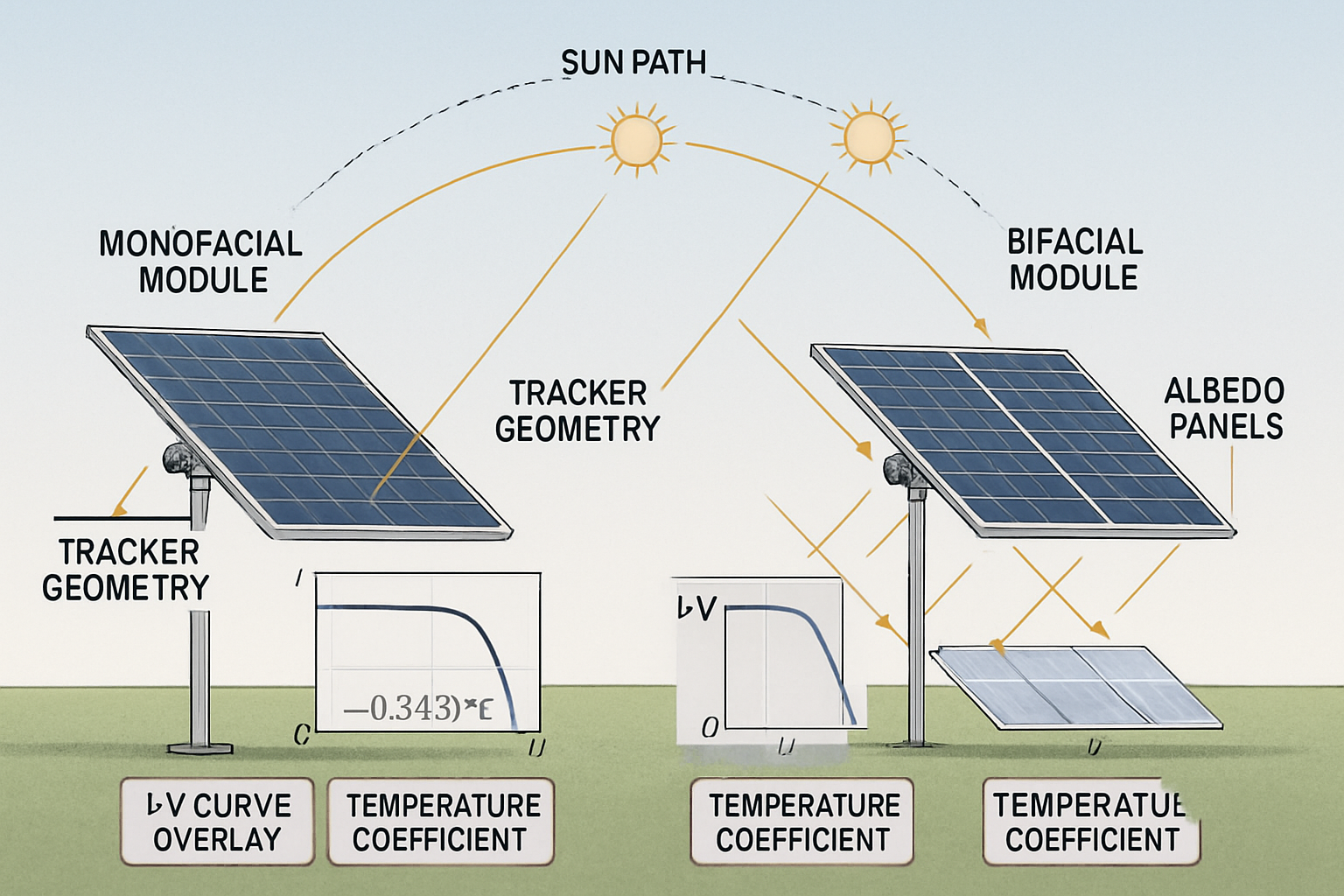Non-investment note: I share engineering checkpoints and public references so you can verify claims. Figures are indicative and region-dependent.
Through 2030, PV modules will trend higher in efficiency and remain cost-competitive, while trade, financing, and reliability risks add variance. From my project work, the best outcomes come from: (1) picking a proven cell stack for the site, (2) sizing strings around high-current modules, and (3) demanding evidence before adopting new architectures.
Technology pathways (2025–2030)
Cell architectures and realistic efficiency bands
- TOPCon (n-type): ~22.2–23.2% in 2025 utility shipments; ~23.5–24.5% by 2030 with metallization/passivation gains.
- HJT (n-type): ~22.5–23.5% in 2025; ~23.8–24.8% by 2030 with improved TCO/back-side design.
- Back-contact variants: selective, premium lines; ~24–25% by 2030 on constrained volumes.
- Perovskite–Si tandems: pilot/early commercial 2026–2028; bankable modules near ~24–26% by 2030 on limited runs; require extended reliability proof.
Macro technology overviews: IEA Energy Technology Perspectives 2024 and U.S. DOE Solar pages summarize R&D and deployment signals.
Large wafers and high-current strings
- String current: many 2025 modules show Isc ~18–20 A; confirm connector, fuse, and combiner ratings.
- MPPT window: ensure inverter tracks higher current at lower Vmp without clipping; re-check at temp extremes.
- Cabling & thermal: model I²R losses; upsize conductors or shorten home runs where needed.
Costs and LCOE (indicative ranges)
| Metric | 2025 | 2030 | Drivers |
|---|---|---|---|
| Average module efficiency (utility) | 22.3–23.2% | 23.8–24.6% | n-type maturity, optics, metallization |
| Factory module cost (mono-Si) | $0.16–0.23/W | $0.12–0.18/W | scale, yield, materials intensity |
| Utility PV LCOE | $0.030–0.055/kWh | $0.025–0.045/kWh | Capex, WACC, trackers, O&M digitalization |
Public cost trend syntheses: IRENA 2024 Cost Report; manufacturing momentum: IEA Advancing Clean Tech Manufacturing.
Risks and how I control them
Policy & supply balance
Trade actions and non-tariff measures shift landed costs and availability; modules/cells often remain more competitive than wafers/polysilicon domestically (see IEA ETP 2024). I stagger procurements and use option clauses to ride ASP volatility.
Technology reliability
- Tandems: proceed via extended damp-heat/UV/TC/encapsulation studies beyond IEC 61215/61730 and seek independent field data before scale-up.
- n-type aging: different PID/LeTID profiles vs. PERC; request mitigation proof and recent PAN files.
- High-current balance: connectors, combiners, and cable thermal margins become new failure drivers without design updates.
Module picking checklist (what I ask vendors)
- Evidence: latest IEC certificates; extended stress test summaries; third-party PQP/lab data; up-to-date PAN files.
- Ratings: Isc/Imp, Voc/Vmp, temp coefficients, bifacial factor; verify in inverter design tools.
- Mechanical: tracker clamp zones, 1500 V suitability, connector interoperability and torque specs.
- Performance guardrails: for 2026–2027 utility builds, set an efficiency floor ~22.5% and revisit quarterly.
BoS and inverter alignment
- Match MPPT current/voltage ranges across min/max site temperatures and altitude.
- Size DC protections (fuses/breakers) for strings exceeding ~20 A if applicable.
- Validate connectors and combiner bus temperatures under peak irradiance; log results.
Storage coupling notes
With LiFePO4 storage, I review inverter power stages and MPPT logic against high-current strings to avoid midday clipping (DC-coupled), or confirm ramp-rate/ride-through settings for AC-coupled. Duration planning follows evening net-load peaks; see DOE Solar and EIA for system context.
What to expect by 2030
- Mainstream utility modules near ~24% efficiency; premium lines higher on selective routes.
- Factory costs trending to mid-teens $/W on advanced lines, with regional bands from trade/logistics.
- BoS and soft-cost optimization driving more of the savings: standardized permitting, prefab harnesses, automated layout.
- Selective tandem adoption where yield uplift is priced and qualification plans are accepted.
Verification links (non-exhaustive)
- IEA — Energy Technology Perspectives 2024
- IEA — Advancing Clean Technology Manufacturing
- IRENA — Renewable Power Generation Costs in 2024
- U.S. DOE — Solar Energy
- EIA — U.S. Energy Information Administration
Wrap-up
For 2025–2030 builds, I treat efficiency and ASPs as moving targets, then lock bankability with evidence: test data, PAN files, MPPT/current checks, and thermal logs. That cuts downside risk while preserving upside from n-type and—when ready—tandems.





Leave a comment
All comments are moderated before being published.
This site is protected by hCaptcha and the hCaptcha Privacy Policy and Terms of Service apply.